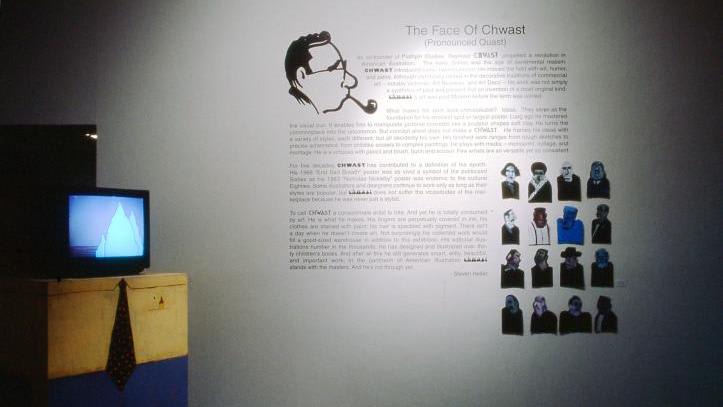Exhibition
The Masters Series: Seymour Chwast

"The Masters Series: Seymour Chwast," October 6 – November 8, 1997
Masters Series: Seymour Chwast
Designer and Illustrator SEYMOUR CHWAST to receive 1997 Masters Series Award from the School of Visual Arts on October 6, 1997
Retrospective Exhibition, entitled The Master Series: Seymour Chwast, to be shown from October 6 to November 8
School of Visual Arts, which begins celebrating its 50th anniversary in September 1997, will honor acclaimed designer ad illustrator Seymour Chwast with its 1996 Master Series Award. As part of the award, the school will mount a retrospective exhibition of Chwast's work at its Visual Arts Museum from October 6 through November 8. Seymour Chwast's first job as a college graduate was working in the promotion department of The New York Times. From there, he went on to co-found the revolutionary Pushpin Studios with Milton Glaser. While he reintroduced past graphic design styles which were transformed into a contemporary vocabulary, the character of his work is unique. It has been used in advertising, animated films, and editorial, corporate and institutional graphics.
Chwast has created over 100 posters and authored or illustrated more than 30 children's books. The subject of a monograph, Seymour Chwast: The Left Handed Designer (Harry Abrams, 1985), he is also co-author of Graphic Style: From Victorian to Postmodern (Harry Abrams, 1987). His work is in the permanent collections of the Museum of Moden Art (New York), the Metropolitan Museum of Art (New York), the Kunstgewerbe Museum (Zurich), Gutenberg Museum (Mainz), Library of Congress (Washington, DC) and the Israel Museum (Jerusalem).
Phil Meggs, author of A History of Graphic Design, states that "Chwast and other Pushpin artists were like turn-of-the-century graphic designers who united various components into a total communication conveying the individual vision of the creator. Using art and graphic history from Renaissance painting to comic books as a data bank of form, images and visual ideas, the Pushpin artists freely paraphrase and incorporate a multiplicity of inspirations into their work, often reinventing these eclectic sources into new and unexpected forms."


